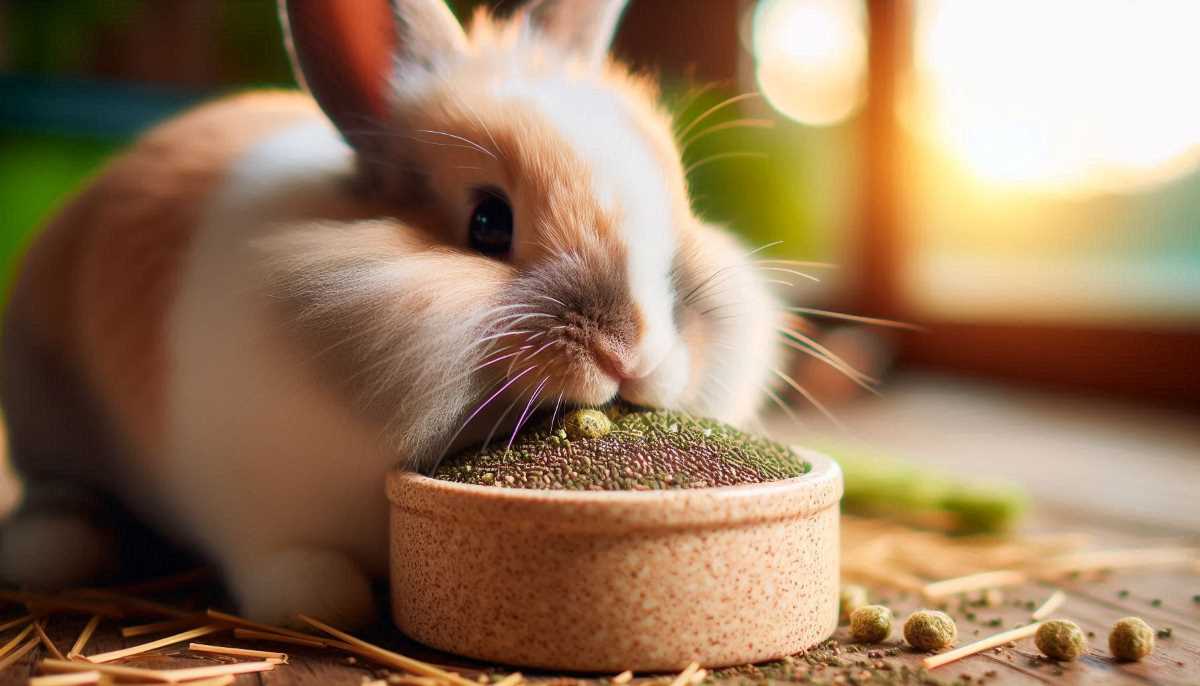Drought-Defying Chia Hay Offers Sustainable Solution for Rabbit Feed
Mexican researchers are developing chia hay as a sustainable and nutritious alternative to alfalfa for rabbit feed. Its high protein content, rapid growth, and low water needs make it a promising option to reduce production costs and environmental impact.

Chia hay could be an option for feeding and, perhaps, reducing the fattening time of rabbits due to its protein level that competes with that of alfalfa, in addition to the short harvest cycle, low water requirement, and long storage time.
Experts from the Faculty of Higher Studies (FES) Cuautitlán, of the UNAM, headed by José Luis Sánchez Millán, an academic of the university entity, are developing the project.
According to the proximate chemical analyses carried out on the herbaceous plant – determination of percentages of protein, moisture, fat, fiber, ash, and soluble carbohydrates – it represents a forage option, Sánchez Millán pointed out.
Its harvest cycle is 72 days and could only be seasonal, while alfalfa, considered “the queen of forages,” requires too much water to obtain its nutritional qualities. Today, with drought conditions and high temperatures, we cannot afford to think about producing forage crops that require large amounts of vital liquid for their cultivation, he said.
From that perspective, the agricultural engineer indicated, we are in a position to have a new forage option with minimal water requirements, a significant level of protein, relatively short production time, and the possible presence of polyunsaturated fatty acids in the meat of rabbits fed with this product, which could be at the same level or nutritionally surpass commercial feed.
According to the expert, the forage obtained at the FES Cuautitlán will be transformed into pellets (small pieces of pressed feed), trying to match the commercial feed. Once obtained, the study will be applied to specimens produced in the Rabbit Breeding Module of the Agricultural Education Center (CEA) of the Faculty.
Elsa Gutiérrez Cortez, who together with José Luis Sánchez Millán heads the FESC-UNAM Research Chair on Agroindustrial Innovation: Efficiency in the Use of Resources and Sustainability in the Face of Climate Change, is in charge of grinding and producing the chia hay pellet to match the characteristics of commercial feed, in addition to the appropriate thickness and making it palatable for animals.
In this regard, she explained that rabbits are selective, just like humans, they are accustomed to consuming feed with certain characteristics, “that is why we also seek to determine the porosity, size and diameter of the commercial pellet to obtain our own in the laboratory.”
The work team performs the tests to produce the feed; this is the first time that work has been done in Mexico to produce pellets from chia hay, and we are pioneers, therefore, we do not know the processing conditions required, and that is something we are studying, she emphasized.
The sample they are experimenting with, explained the food engineer, comes from the raw material we have produced in CEA plots, and then the grinding is done with a hammer mill powered by a tractor to go through another shearing crusher to reduce the size.
The pellet contains approximately 50 percent chia hay, which is intended to cover the nutritional needs of the rabbits, which are divided into lactating, growing, maintenance and gestation, each of these stages in rabbit production has different nutritional requirements.
In our case, we are going to work with those in the growth stage, which need 16 percent protein and 2,500 kilocalories of digestible energy, in addition to 12 percent crude fiber, as well as vitamins and minerals, approximately.

Continuing, José Luis Sánchez pointed out that, according to the data from the proximal chemical analysis carried out on the chia hay, it covers and exceeds the protein needs, but in vivo work is necessary to verify this.
If the energy needs were not covered with this first pellet, it could be enriched with other ingredients such as corn flour, molasses; “and being strict, a little soy paste, although chia hay could be enough,” said the university student.
On the other hand, if no differences are observed in growth, it is progress, but if in one of the experimental groups we see greater weight gain, it is even better, because this will lead us to obtain a more economical food that covers the performance level compared to a commercial one.
Currently, the production costs of any species are subject to grains, fodder, and environmental conditions. However, studies by experts at FES Cuautitlán indicate that chia has high potential for the diet of rabbits, explained Elisa Gutiérrez Hernández, head of the CEA Rabbit Breeding Module.
She said that rabbits have a fattening period of 70 days, the feed conversion is three kilos for each kilogram of the animal. With the protein level offered by the chia hay processed here, the protein needs would be covered in the fattening stage.
With this, we would also be able to have a highly beneficial food option for their production due to the climatic conditions we live in, and production costs would decrease. We could even think about reducing the fattening stage, she said.
They are coming out at approximately 70 days of age, with weights ranging from 1.8 kilos to 2,200 kilos approximately, which are the ones that are normally sold. We hope that the muscle volume and weights will be ideal at the end of the study, he stressed.
The breed used in the comparison of two treatments (one with commercial feed and another with chia hay pellets), is New Zealand, one of the three that are produced in the Module, the other two being California and Chinchilla.
Expectations are high, it is an excellent collaboration between the areas of Agricultural Engineering, Veterinary Medicine and Animal Husbandry, and Food Engineering. “This type of interaction rarely occurs and, above all, with results that could be encouraging,” concluded Gutiérrez Hernández.




